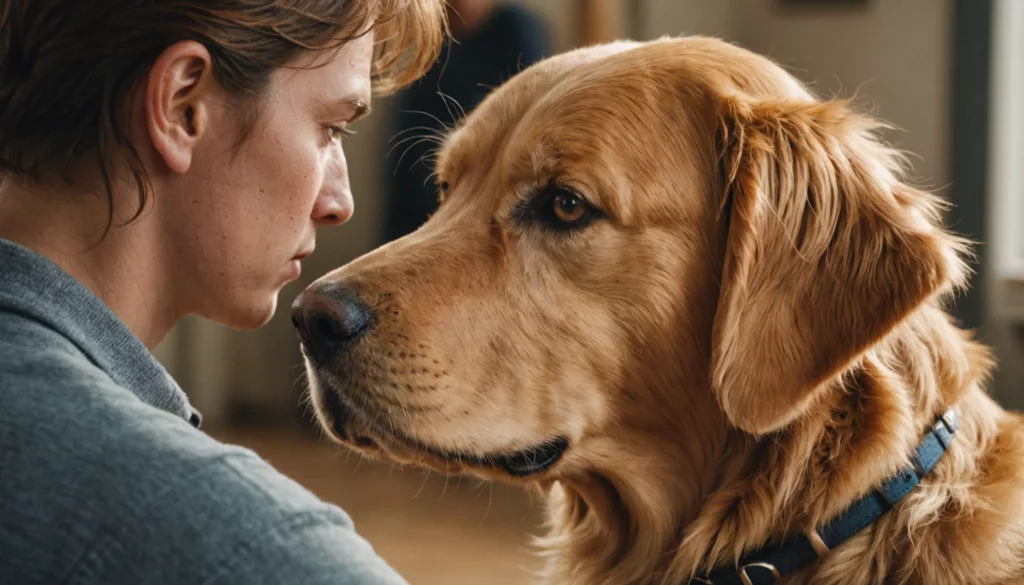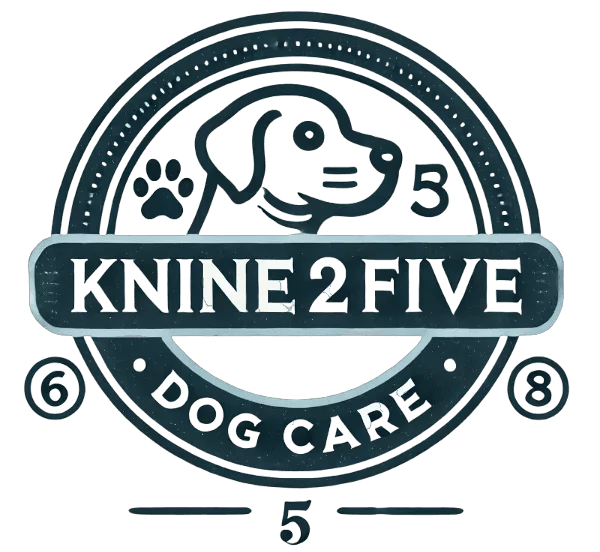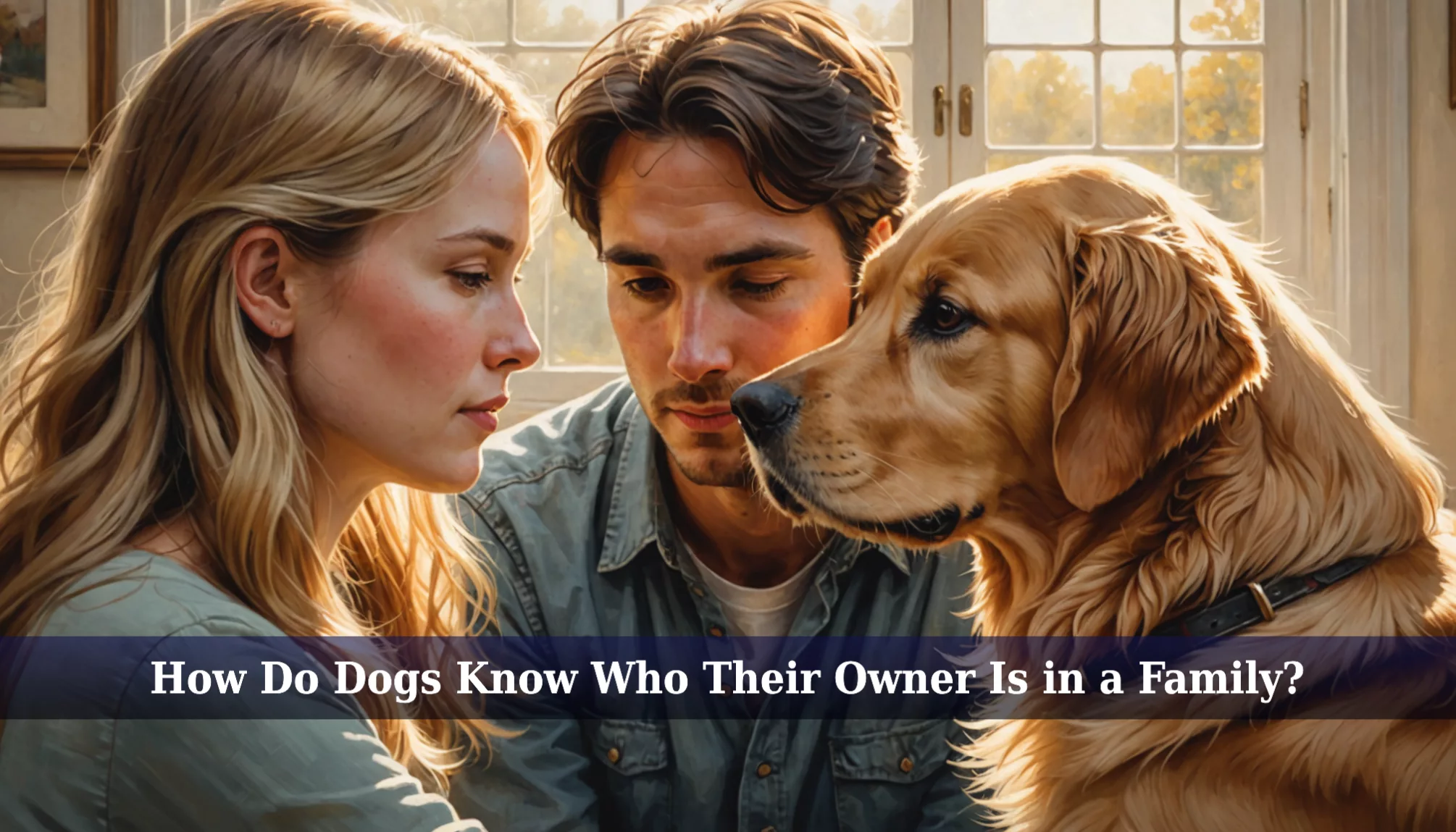When your furry friend races to greet you at the door with a wagging tail and excited jumps, it’s more than just random enthusiasm! Understanding how dogs know who their owner is in a family reveals the incredible bond between humans and their four-legged companions. Your dog’s amazing ability to recognize you comes from a combination of their super-powered senses, including their remarkable sense of smell that can identify your unique scent from hundreds of others.
From your voice patterns to your facial features, your dog uses multiple ways to pick you out of a crowd. They’re actually processing thousands of tiny details about you every day, creating a special memory map that helps them recognize their favorite humans. We’ll explore the fascinating science behind your dog’s recognition abilities, discover how they use body language to show their love, and learn amazing ways to strengthen your special bond. Get ready to understand your furry friend better than ever before!
Understanding How Dogs Can Recognize Their Owners

Dogs develop recognition skills that blend powerful senses with learned behaviors. These skills often answer the question, “how do dogs know who their owner is in a family?” Scientific studies show that dogs rely on scent, sight, and movement patterns to identify familiar people. Some research also links emotional cues to a dog’s ability to distinguish specific family members over time.
What Signs Do Dogs Use to Recognize Their Owners?
Dogs typically focus on scent, voice, and facial cues to recognize owners. Their 300 million olfactory receptors detect unique chemical markers that separate one person’s body chemistry from another. They also respond to distinctive voices and body language cues, such as an individual’s walking style or daily routines. This combination often resolves how do dogs know who their owner is in a family setting.
| Method | Reliability | Key Features |
|---|---|---|
| Scent | Very High | Detects unique body chemistry |
| Voice | High | Recognizes tone patterns |
| Visual | Medium | Identifies faces, body carriage |
| Touch | Medium | Associates familiar handling |
How Dogs See and Interpret Human Emotions
Dogs show strong emotional awareness through close observation of faces, postures, and voice tones. Research indicates that they detect positive or negative expressions by reading facial muscles and gauging body language. Similar brain structures to humans enable dogs to process emotional cues with high accuracy, which helps them maintain a secure bond in a family environment.
The Sweet Bond Between Dogs and Their Owners
A close bond forms as dogs recognize caregivers and respond to positive interactions. Synchronizing heart rates, wagging tails, and focused gaze often signal strong attachment. Many canines show clear stress relief when spending time with a recognized owner, and they follow the preferred family member more closely. These patterns highlight how do dogs know who their owner is in a family and why they develop trust toward a familiar caregiver.
The Science Behind Dogs Recognizing Owners

Dogs have specialized senses that help them identify familiar humans. Current studies explore how canines rely on scent, sight, and sound to maintain bonds within a family, including how do dogs know who their owner is in a family.
Research Studies: How Dogs Can Recognize Their Owners
Scientific studies indicate that dogs possess the ability to recognize and differentiate between human faces. Research utilizing fMRI technology has revealed that specific areas of the canine brain are activated when dogs view familiar human faces, suggesting neurological processing of facial recognition.
Studies conducted at institutions such as Eötvös Loránd University have provided evidence that dogs can visually distinguish their owners from other individuals, indicating a capacity for facial recognition. However, it is important to note that dogs also rely heavily on other cues, such as scent and auditory information, in recognizing individuals. Therefore, while visual facial recognition is present, it is part of a broader, multi-sensory recognition process.
The Role of Scent in Dog Recognition
Scent forms the primary recognition cue for many dogs. They have about 300 million olfactory receptors, while humans have only 6 million. This advantage allows dogs to detect emotional changes and each person’s unique odor. Scent memory can last for years, which explains how do dogs know who their owner is in a family, even after long absences.
Videos That Reveal the Understanding Dogs Have
Recent footage shows consistent behaviors when dogs spot primary caregivers. Dogs wag tails, vocalize, or show excited body language upon recognizing familiar faces. Many dogs match these memory cues with known scents. These patterns highlight a canine mind wired to respond to familiar individuals.
Neurological Evidence of Dog-Owner Recognition
Brain imaging studies reveal specific activation patterns when a dog sees a recognized person. Researchers identify heightened activity in regions linked to face processing, voice recognition, and emotional responses. This multi-layered system enables dogs to combine scent, sight, and sound in ways that support secure interaction.
The Importance of the Owner-Dog Relationship

You shape your dog’s sense of safety and familiarity every day. This connection affects how your dog greets each family member and learns to recognize you as a trusted caregiver. Many studies show that a strong owner-dog bond plays a key role in canine behavior and helps answer the question: how do dogs know who their owner is in a family?
How Dogs Tell Our Emotions and Actions
You guide your dog through a mix of facial expressions, tone of voice, and body carriage. Research from the University of Helsinki shows that dogs focus on your face to detect happiness or stress.
• Emotional Cues
– Dogs often sense your tension and may change their posture or gaze (University of Helsinki)
– They respond with higher cortisol levels when you show anxiety (National Center for Biotechnology Information)
• Visual and Auditory Signals
– Dogs look for shifts in your facial muscles
– They pay special attention to changes in your voice
The Similarities and Differences in Relationships Within Families
Your dog bonds uniquely with each household member. Primary caregivers often get the highest level of affection. Other family members receive different greeting behaviors, including varied wag patterns or distinct vocal responses.
| Family Member | Typical Dog Response |
|---|---|
| Primary Caregiver | Most intense focus and loyalty |
| Children | Playful and protective interactions |
| Other Adults | Recognition based on daily engagement |
Personal Stories of Dogs Recognizing Their Owners
Some dogs rush to the door the moment they hear a familiar sound. Others show extra excitement if they catch your scent after you’ve been away. Observations from veterinary professionals highlight how dogs remember special cues, like your footsteps or everyday routines.
The Impact of Early Bonding on Recognition
You can strengthen your dog’s recognition abilities by spending time together during puppyhood. Socializing your dog between four and twelve weeks helps your dog recognize your voice and respond to your scent. Research suggests repeated positive interactions create secure attachment patterns that last into adulthood.
Training Dogs to Recognize Their Owners in a Family

Dogs rely on multiple senses to identify family members and form close bonds. If you wonder how do dogs know who their owner is in a family, consistency and clear cues help them learn quickly.
Best Practices for Training Your Dog to Associate with You
You can build strong recognition abilities by creating a regular schedule for feeding, walking, and training. Pair each activity with short, distinct voice commands that your dog can easily follow. Offer consistent rewards when your dog responds to each cue, and spend focused one-on-one time every day. These methods stabilize the canine-human relationship and strengthen your dog’s sense of smell, which is 10,000-100,000 times stronger than yours.
Common Misconceptions About Dog Recognition
Many people believe dogs only recognize owners by sight, but scent and sound play bigger roles. Recognition also develops over several weeks, not instantly. Your dog can form shared bonds with other family members too, especially when each person uses consistent tones and routines. These facts highlight your dog’s remarkable capacity for recognition.
Frontiers in Psychology
The Role of Consistency in Reinforcing Owner Recognition
Stable daily routines, such as set feeding times and dedicated training blocks, help your dog learn exactly who cares for them. Regular command patterns, like using the same words and gestures, make recognition cues clearer. A predictable schedule lowers stress, which lets your dog focus on bonding. Over time, this consistency strengthens overall recognition skills.
Age-Specific Training Techniques
Puppies aged 8-16 weeks need short, frequent sessions that highlight basic commands and socialization. Adult dogs benefit from longer, more complex training that includes advanced cues and group sessions with multiple family members. Gentle reminders and scent-based approaches help senior dogs maintain familiar patterns. Recent research from Hungarian universities shows that dogs even recognize their owners’ faces in photographs, proving their powerful recognition abilities.
Expert Insights and Current Research on Dog Recognition

Case Studies That Reveal What Dogs Can Learn
Recent studies help explain how dogs know who their owner is in a family. Dogs recognize their owner’s face in photos with 88% accuracy. They also show strong activity in the temporal lobe when they see familiar faces. Findings published in Applied Animal Behaviour Science reveal that dogs spend more time looking at their owner’s face rather than a stranger’s face. They can even identify their owner’s voice in controlled tests, starting as early as 8 weeks old.
Future Trends in Canine Training and Owner Recognition
Research continues to explore advanced methods for understanding recognition cues in the canine mind. Scientists use fMRI scans to watch how your dog’s brain reacts to your voice and face. Some experts focus on genetic factors that may boost a dog’s capacity for recognition. Others develop training routines that rely on positive reinforcement and clear signals. These studies help create better strategies for family dogs and service animals alike.
Tips from Researchers on Strengthening Owner-Dog Relationships
Animal behaviorists suggest consistent routines to improve recognition skills. Try using simple voice patterns and direct eye contact during daily interactions. Allow regular scent bonding by letting your dog smell personal items. Reinforce trust with gentle touch and calm speech whenever you greet your pet.
Latest University Studies from Hungary and Beyond
Ongoing projects show that dogs process faces in specialized brain regions, similar to human infant development. Early bonding often leads to a stronger sense of security for your dog. Dogs can maintain memories of their owner after long periods apart. Multiple senses—including sight, sound, and smell—help dogs recognize you and form lasting connections.
Practical Tips for Strengthening Your Dog’s Recognition

Are you wondering how do dogs know who their owner is in a family? Clear routines, reliable reinforcement, and unique markers help your dog recognize you every day.
Daily Activities to Enhance Your Bond
Play for 15–20 minutes each morning and evening to build strong recognition cues. Offer consistent feeding times and encourage your dog to come to you for treats and resources. Daily grooming sessions also release oxytocin, which deepens trust. These habits give your dog a secure base for learning your voice and scent.
Using Positive Reinforcement Effectively
Reward good behavior within 2–3 seconds so your dog links actions to praise. Use a distinct tone of voice and pair it with a clear hand signal. Consistent feedback strengthens recognition skills. Reserve special treats for training to create a powerful memory of success.
| Method | Timing | Benefit |
|---|---|---|
| Treat rewards | Immediate | Inspires positive association |
| Voice praise | Within 2 seconds | Teaches vocal recognition |
| Physical contact | During good behavior | Encourages bonding hormones |
| Hand signals | Paired with commands | Reinforces visual cues |
Creating Unique Identification Markers
Keep your scent consistent by avoiding frequent perfume changes. Use a unique whistle or greeting pattern to stand out. A stable routine helps a dog’s sense of smell lock onto familiar people and cues. These markers provide a clear answer when you ask how do dogs know who their owner is in a family.
Conclusion
The amazing ways dogs recognize their owners go far beyond simple facial recognition. Through their incredible sense of smell, ability to read our emotions, and their deep understanding of our unique voices, dogs form special bonds that make them truly remarkable companions. Scientific research has shown that these connections start forming from puppyhood and grow stronger over time.
Whether it’s through tail wags, excited greetings, or those loving gazes, your dog has many ways of showing they know exactly who you are. By spending quality time together and using positive reinforcement, you can strengthen this wonderful connection with your furry friend. Remember that every interaction you share helps deepen your unique bond and makes your relationship even more special.
The next time your dog greets you with boundless enthusiasm, you’ll know it’s not just random excitement – it’s their way of saying they recognize and cherish their special person. Keep exploring and enjoying the wonderful journey of understanding your dog’s amazing ability to know and love you!
FAQs
1. How long does it take for a dog to recognize its owner?
Your dog usually starts noticing who you are within three to seven days of regular interaction. Puppies may show signs of awareness in just 24 to 48 hours. True bonding can take two to three months, especially if your dog has had previous socialization or a unique background. Consistent, positive experiences help form lasting trust.
2. Can dogs recognize their owners by face alone?
Facial recognition plays a key role, with many dogs focusing on the eye region to identify you. Research shows they can match faces with 88% accuracy. Your scent, voice, and body language also guide their recognition cues, helping ensure they know it’s you even in busy environments.
3. Do dogs remember their owners after long separations?
Dogs carry strong memories that can last for years. Their sense of smell is the strongest link, but they also respond to your face and voice. Emotional bonds remain intact, so your dog often greets you enthusiastically after time apart. These affectionate responses go beyond basic conditioning.
4. How do dogs choose their favorite person in the family?
Your dog typically prefers whoever offers the most positive interactions, such as feeding and gentle play. Early socialization between three and 16 weeks helps shape lifelong attachments. Different breeds have unique tendencies, but dogs usually stay closest to the caregiver who provides consistent, loving attention.

